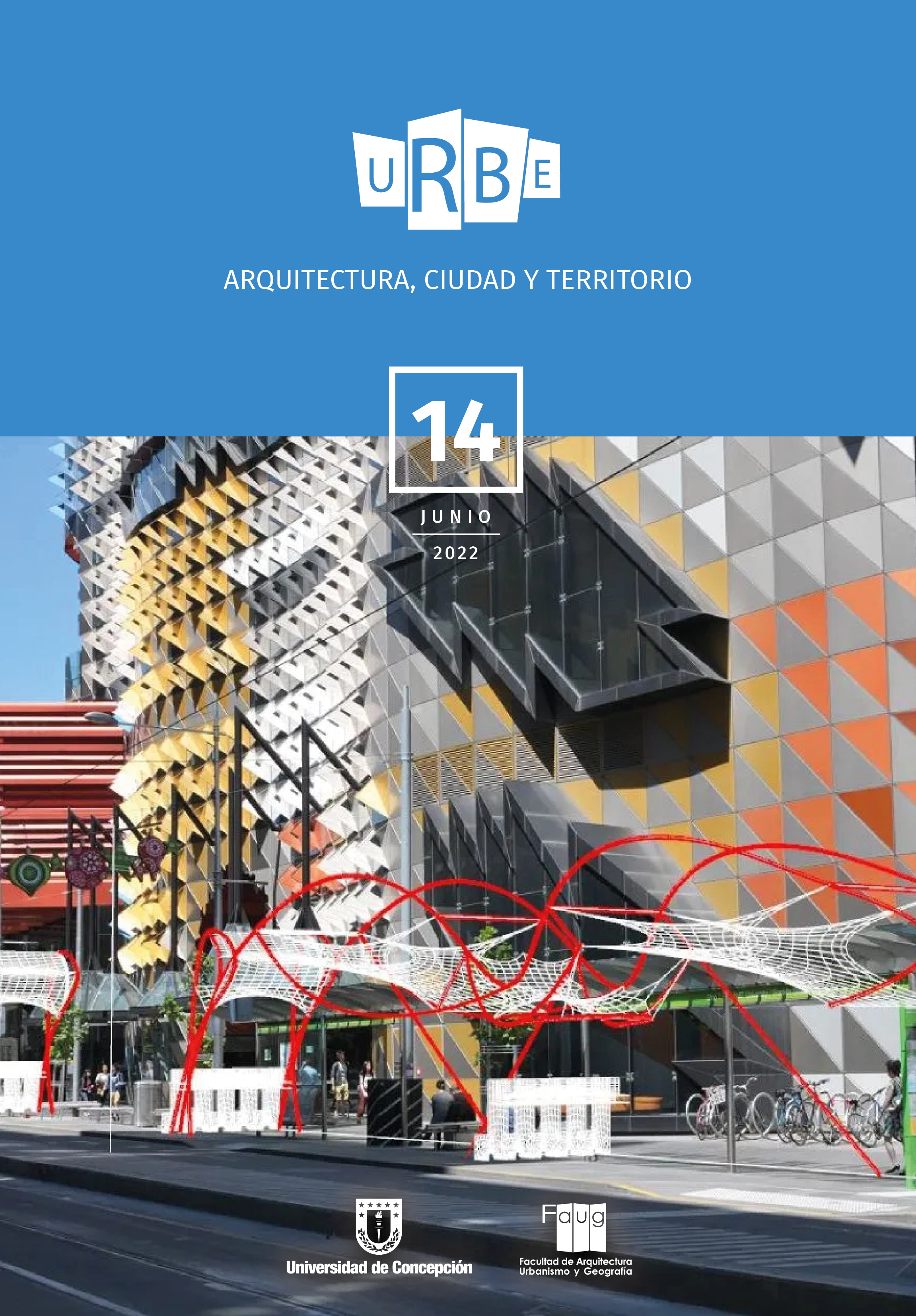Emergency housing adaptations: informal solutions to constructive precariousness, case of Las Algas camp, Talcahuano
DOI:
https://doi.org/10.29393/UR14-2ACIM20002Keywords:
Informal settlements, temporary habitability, emergency housing, thermal comfortAbstract
The article presents the results of research the main objective of which was to study thermal1 comfort in emergency housing, generally used as a short-term response by the state to situations of socio-natural disasters in Chile. The study was based on the mediaguas (informal dwellings) built by Fundación Techo, in the Las Algas settlement, in Talcahuano. The comparison was made through a document analyisis of the construction system of the original mediagua and field work, which allowed, through observation and survey, to collect data on the modified house. Once the results of the investigation were obtained, the different modifications created by the inhabitants of the mediaguas were compared with the housing standards of the National Emergency Office of the Ministry of the Interior (ONEMI), in order to identify the most suitable solutions favorable for adequate thermal comfort in the mediagua. The results obtained show that the most appropriate informal solutions to improve thermal comfort in the mediagua do approach the minimum requirements of the National Emergency Office of the Ministry of the Interior (ONEMI) house, demonstrating that the actions of its inhabitants can be taken into consideration, to enrich the quality of habitability in the mediagua, while waiting for a definitive solution from the state.
Downloads
References
Arriagada, C. y Hernández, A. (2010). Catastro de las transformaciones hechas por los habitantes en la vivienda de emergencia. (Tesis). Universidad del Bío-Bío.
Centro de Estudios de Ciudad y Territorio del Ministerio de Vivienda y Urbanismo. (2020). Informe de campamentos en áreas de riesgo según el instrumento de Planificación Territorial. Santiago, Chile.
Centro de Investigación Social TECHO-Chile. (2021). Actualización del Catastro Nacional de Campamentos 2020-2021. Santiago, Chile.
Garay Moena, R. M. (2015). Viviendas de emergencia: Reflexiones a partir de la experiencia del terremoto del 27f. Revista Invi, 83(9).
Germanwatch. (2017). Global Climate Risk Index 2017, Who suffers most from extreme weather events? Weather-related loss events in 2015 and 1996 to 2015. Berlin.
Greene, M. (2004). El programa de vivienda progresiva en Chile 1990-2002. Departamento de Desarrollo Sostenible. División de Programas Sociales. Pontificia Universidad Católica de Chile. https://publications.iadb.org/publications/spanish/document/El-programa-de-vivienda-progresiva-en-Chile-1990-2002.pdf
Jirón, P. (2010). The Evolution of Informal Settlements in Chile: Improving Housing Conditions in Cities. In F. Hernández, P. Kellett, & L. K. Allen (Eds.), Rethinking the Informal City: Critical Perspectives from Latin America (NED-New edition, 1, pp. 71–90). Berghahn Books. http://www.jstor.org/stable/j.ctt9qcj92.10
Maslow, A. (1943). Una teoría sobre la motivación humana. http://www.blau consulting.com/articulos/teoriadelamotivacionhumana.pdf
Ministerio de Obras públicas Gobierno de Chile. (2014). Guía práctica para la vivienda de emergencia. Dirección de Arquitectura.
Moreno, J.J. (2018). Nuevo estándar de vivienda y desafíos para la habitabilidad transitoria: Posibilidades de una vida digna en el marco de barrios de emergencia. (Tesis). Pontificia Universidad Católica de Chile. https://estudiosurbanos.uc.cl/wp-content/uploads/2018/08/TESIS-JJMF.pdf
Moris, R., Ketels, F. (2014). Recuperación post-catástrofe: nuevos tipos y estándares para la vivienda de Emergencia. Centro de Investigación para la Gestión Integrada del Riesgo de Desastre (CIGIDEN). Santiago de Chile.
Moris, R. (2016). Implementación de barrios de emergencia en región de Atacama 2015. Casos: Nantoco, Diego de Almagro, El Salado y Chañaral. Centro de Investigación para la Gestión Integrada del Riesgo de Desastres (CIGIDEN).
Moris, R. (2016). Sistema de Habitabilidad Transitoria Post-Catástrofe. Presentación realizada a la Oficina Nacional de Emergencia del Ministerio del Interior y Seguridad Pública (ONEMU).
Oficina Nacional de Emergencia del Ministerio del Interior y Seguridad Pública. (2017). Requerimientos técnicos mínimos vivienda de emergencia. Ministerio del Interior y Seguridad Pública. Santiago, Chile.
Optivent 2.0. (2020). Información de apoyo climas de Chile. http://optivent.ubiobio.cl/Concepcion/#:~:text=El%20clima%20de%20la%20ciudad,Oce%C3%A1nico%20mediterr%C3%A1neo%20con%20verano%20suave.
Reyne, M. (26 de abril de 2013). Onemi: “Biobío es la única región expuesta a todos los riesgos naturales”. Bíobio Chile. https://www.biobiochile.cl/noticias/2013/04/26/onemi-bio-bio-es-la-unica-region-expuesta-a-todos-los-riesgos-naturales.shtml
Servicio Regional de Vivienda y Urbanización, región del Bíobio. (5 de septiembre de 2019). Catastro de MINVU confirma la existencia de 131 campamentos en la Región del Biobío. https://www.serviubiobio.cl/2019/09/05/catastro-del -minvu-confirma-la-existencia-de-131-campamentos-en-la-region-del-biobio/
Walker, V., Wagemann, F., Garay Moena, R., Tapia-Zarricueta, R. y Domínguez, G. (2018). Habitabilidad transitoria en desastres en Chile: experiencia en el período 2014-2017. https://repositorio.uchile.cl/handle/2250/151726
Published
How to Cite
Issue
Section
Copyright (c) 2022 Isidora Valdivia Senociain, Maria Isabel Rivera-Barraza

This work is licensed under a Creative Commons Attribution 4.0 International License.
Revista URBE. Arquitectura, Ciudad y Territorio tiene licencia de Creative Commons Attribution 4.0 International (CC BY 4.0) y debe citarse correctamente.









